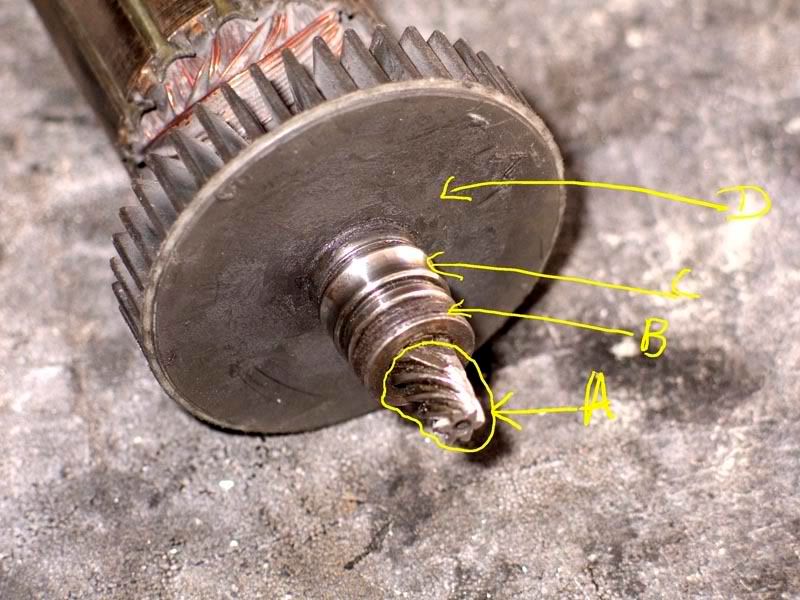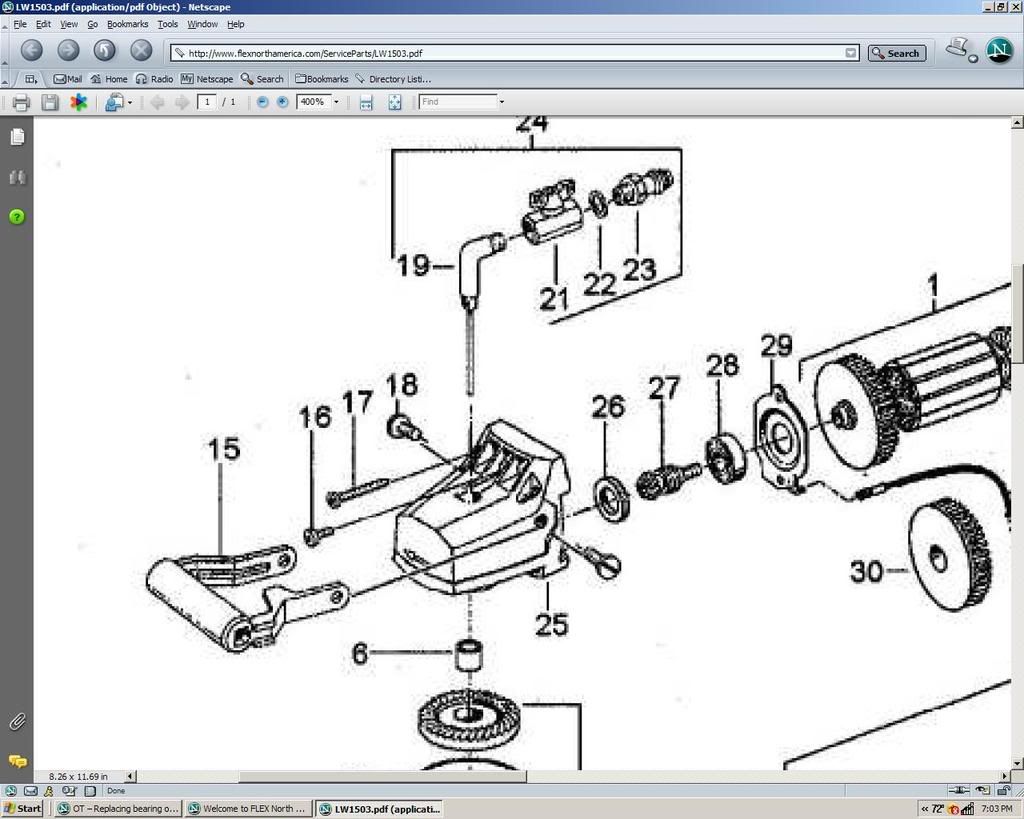fly_sd
Aluminum
- Joined
- May 20, 2006
- Location
- San Diego,US
I have an electric polisher that needs new bearings so I ordered them form the manufacturer (front and rear bearing on the armature). The rear bearing was easy to replace – pressed out the old one and them pressed in the new one.
However, I cannot figure out how to do the front one. I tried pressing it out and the bearing shattered in the press. I then looked at the manufacturer’s drawing and can see that it really cannot be pressed out as I thought. Pic below

In the pic what’s left of the bearing is C. C is pressed on to A & B which is a single assembly. This whole thing is then pressed into D.
I cannot figure out how to pull out the A/B/C assembly out of D. In cases like this where a whole item has been pressed on, how can it be extracted.
However, I cannot figure out how to do the front one. I tried pressing it out and the bearing shattered in the press. I then looked at the manufacturer’s drawing and can see that it really cannot be pressed out as I thought. Pic below

In the pic what’s left of the bearing is C. C is pressed on to A & B which is a single assembly. This whole thing is then pressed into D.
I cannot figure out how to pull out the A/B/C assembly out of D. In cases like this where a whole item has been pressed on, how can it be extracted.




